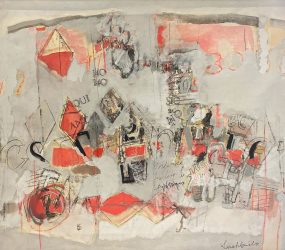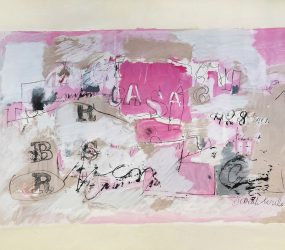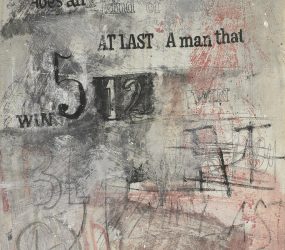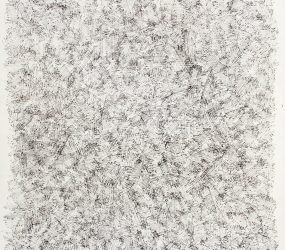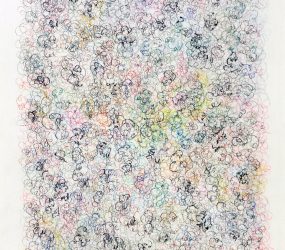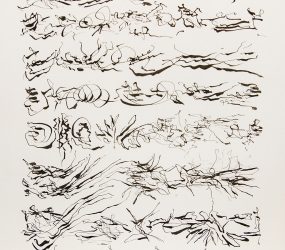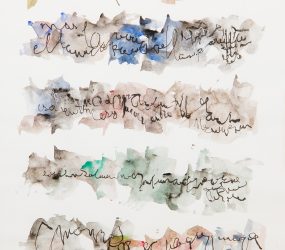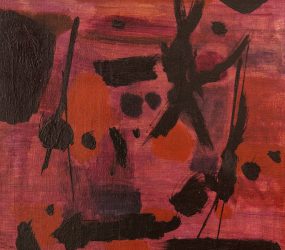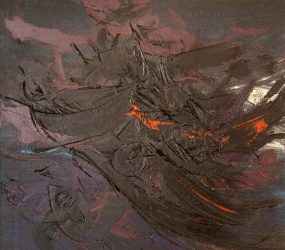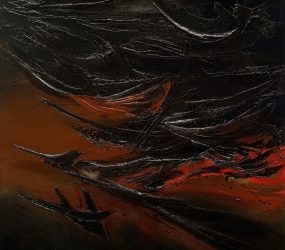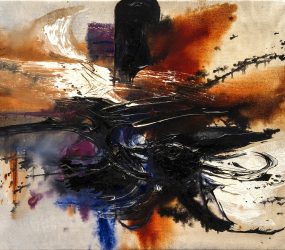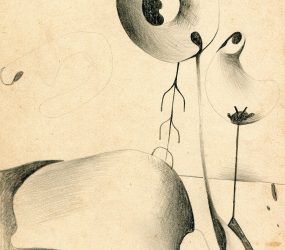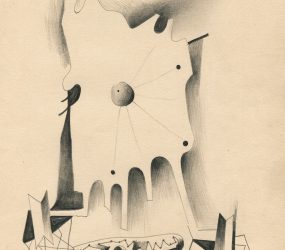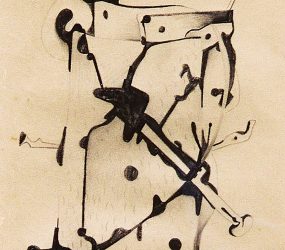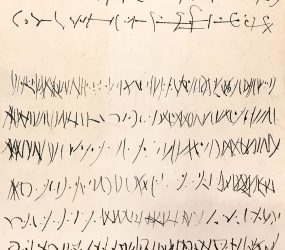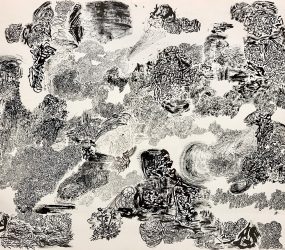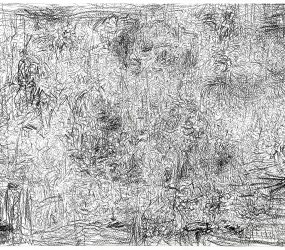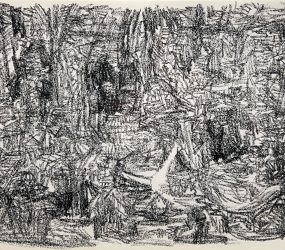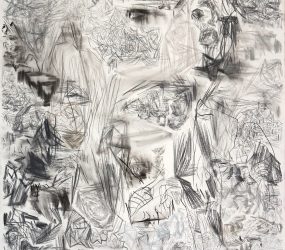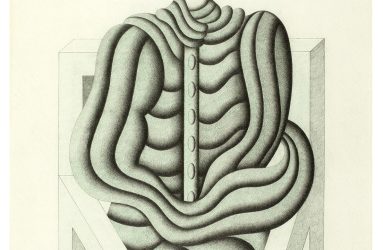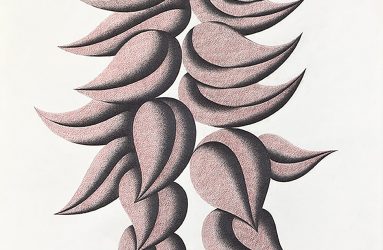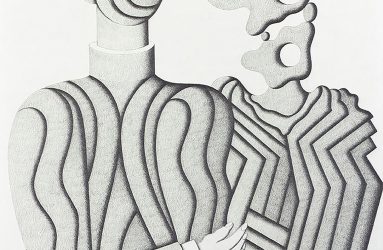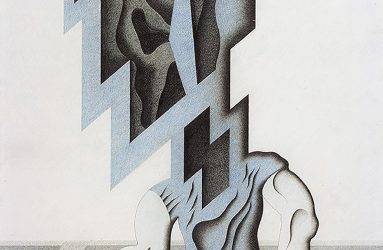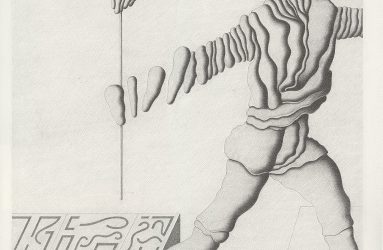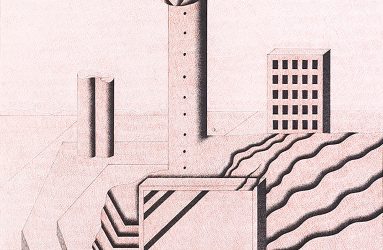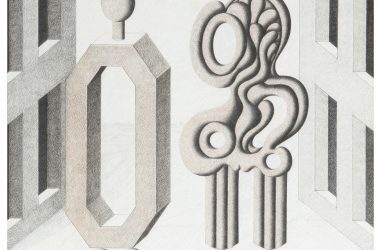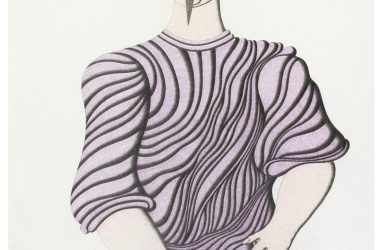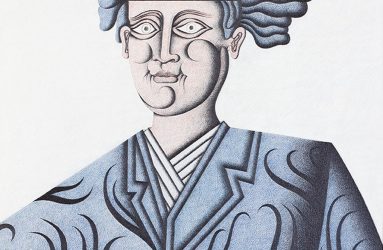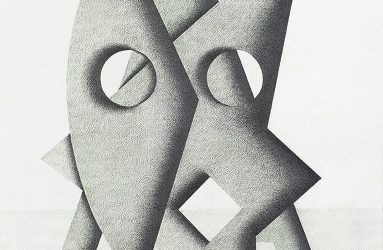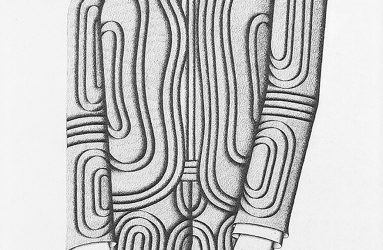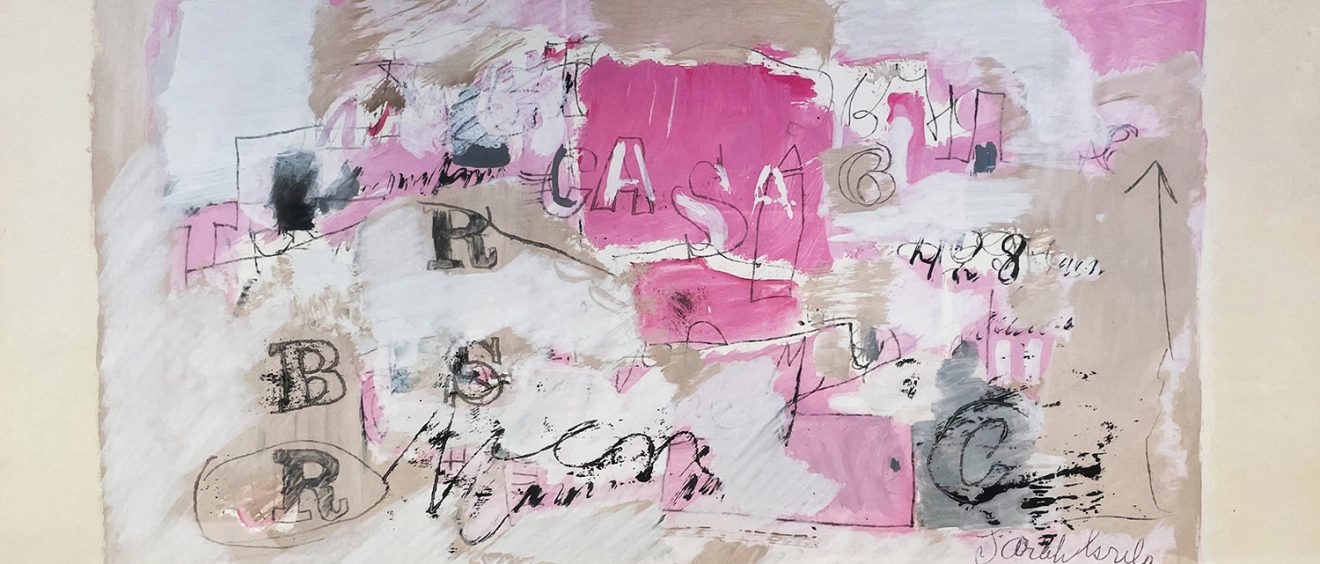
ART BASEL MIAMI BEACH 2023
Miami Beach Convention Center
December 8-10, 2023
Booth A6
–
“A drawing is simply a line going for a walk.“
Paul Klee
–
Jorge Mara • La Ruche is proud to announce its participation in the 2023 edition of Art Basel Miami Beach
For the 2023 edition of Art Basel Miami, Jorge Mara • La Ruche presents a selection of artworks by artists represented by the Gallery, whose poetics are involved with words and the graphic, scriptural and calligraphic sign, incorporated as a plastic strategy in their abstract compositions.
The selected set of artworks refers to the persistence of avant-garde grammars in the current art scene. At the same time, it offers the viewer a field of reading, reflection and harmony with the increasing visibility that this peculiar territory of the present artistic syntax has acquired internationally in recent curatorial and museology manifestations.
With Sarah Grilo it is the cryptographic inscriptions, composed by words, letters, numbers and graffiti, which essentially contribute to the mystery and poetry of her abstract compositions.
–
–
León Ferrari experiments with asemic and symbolic writing, playing with semantically unintelligible calligraphic elements which attain great visual and pictorial impact.
–
–
Kazuya Sakai experiments with pictorial ideograms, and he resorts to a fully contemporary orientalist aesthetic.
–
–
Plastic typographic resonance can also be appreciated in the modernity of Batlle Planas’ drawings and collages.
–
–
The works of Eduardo Stupía blur and enrich the limits between gestural abstraction and drawing, forming a unified text-image grapheme.
–
–
–
“Since the dawn of civilization, drawing and writing…were the same thing.“
Paul Klee
–
KABINET 2023: Roberto Aizenberg . Drawings
Our Kabinett sector at ABMB 2023 will showcase a corpus of drawings by the renowned Argentine surrealist artist Roberto Aizenberg from 1960 to 1990.
Aizenberg is a major figure of Latin American art of the second half of the 20th century.
A completely sui generis artist who was frequently labeled a Surrealist, but preferred to align himself in the tradition of the Metaphysical artists. His allegiance went as far back as the Renaissance masters, whom he treasured and studied in depth.
Drawing has a prominent role in Roberto Aizenberg’ oeuvre. He was a meticulous practitioner who devoted long hours of fastidious care to each of his works on paper. Their execution could take from a few months to as long as several years, before the artist considered them complete.
He favored the use of black and color pencil on thick and granulous paper for his playful, whimsical, ambiguous, sometimes troublesome and often slightly disturbing drawings.
The works on view were produced between the 1970s and 1990s, many of them were made when the artist was living in Italy and France.
–
–
Drawing has a central place in the work of Roberto Aizenberg. It strictly deals with one of the two facets that make up his creative world. The other, of course, is painting. Except in some cases where certain traits of his drawings and paintings are visited and formally relate with each other, the spirits that animate one or another mean distancing each other. To put it very simply: Aizenberg is a “classic” painter in his oils and a thoroughly modern one in his drawings. The paintings are dense, with a strong metaphysical, suggestive aura, in solemn moments, deliberately cold. On the contrary, the drawings have a greater sense of freedom. They are playful, whimsical, ambiguous, sometimes troublesome and often slightly disturbing.
But they always keep the viewer at a distance. They don’t look for pathos or complicity.
–
–
It is fascinating for anyone who has dealt in private with Aizenberg, to see how these two aspects of his work strictly correspond to very marked personality traits. With his friends, Bobby Aizenberg was playful, affectionate, ironic, contradictory, very apodictic and sure of his opinions, especially in artistic matters. He had a real reverence for his teacher, Juan Batlle Planas, who greatly influenced him formally and spiritually, especially in his early works. Aizenberg sought and took advantage of the influence of some artists who he greatly admired and by whose work he was nurtured, taking formal and theoretical resources from them that made up his own: De Chirico, Ernst, Picasso were his divinities. But Piero Della Francesca, Pisanello, Durero were as well. We find traces in his work from all of these, and from other artists he looked at and studied carefully from.
–
–
On the other hand, again and again when discussing Aizenberg´s work, we resort to the terms puzzling or eerie. And this feature, evident in his art, was also present, despite his jovial way, in his personality. There is a mystery in the center of Aizenberg´s work that one perceives, one which is not immediately decipherable; an elusive secret, an enigma.
–
–

